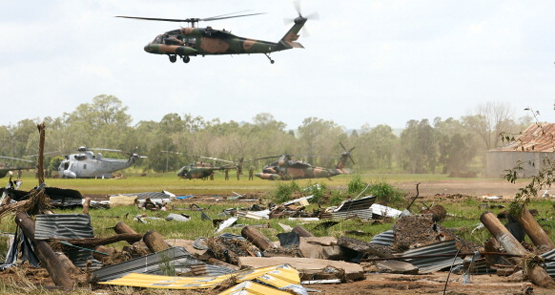Grantham flash flood survivors who have not been willing to swim or even step in a bath since January 2011 are hoping their experience of the deadly “wall of water”, which killed 12 adults and children in the south-east Queensland town, will finally be validated by a third hydrology study into the disaster. They are hoping that the new inquiry, announced yesterday by Queensland Premier Annastacia Palaszczuk, will deliver a believable result.
Lockyer Valley locals have suffered the deaths of family and friends, loss of homes and stability, along with a loss of trust in civil authorities, since the 2011 disaster. Several Grantham people now say that their near-death experiences and losses during the flood were not nearly as difficult a burden as their fight to be believed since the event.
Grantham residents have not been given any opportunity until now to give verbal evidence to an inquiry into the disaster. Lockyer Valley Regional Council mayor Steve Jones has welcomed the inquiry, and some residents are already preparing their submissions for presentation from as early as next week.
Grantham resident Lisa Spierling says people are ready to speak about the event: “I’m in a much better place to be able to speak. My focus for the last four years has been rebuilding.”
But the litany of failures by government agencies and insurance companies has left some flood survivors so shaken that they are sceptical about whether the truth will emerge this time.
A first hydrology study commissioned by the Queensland Floods Commission of Inquiry was scrapped in 2011 when the study failed to account for the existence of an embankment up to 5.5-metres high and 380-metres long around a quarry, three kilometres west of the town.
Locals believe the banking up of water and flood debris behind the embankment, which was observed by long-term local residents, and the sudden destruction of the embankment, observed by others, sent a torrent of water, several metres deep and at speeds akin to a dam burst, heading across paddocks towards the town.
They believe the embankment collapse contributed to the speed and ferocity of the flood, which struck soon after 4pm on January 10, 2011, killing 12 and destroying 138 houses in the town.
A second hydrology study was undertaken by engineering consulting firm Sinclair Knight Merz, which found the quarry had minimal effect on the behaviour or the final height of the flood.
Many of the survivors who had narrowly escaped with their lives, cried when they read the Floods Commission of Inquiry report because the findings did not represent the reality they lived on that dreadful day. Frustration turned to anger, which boiled over on March 10 this year when former quarry owner Dennis Wagner told the ABC’s World Today that he lives “with the knowledge [the quarry] probably saved a few lives”.
Gillespie Engineering director Sean Gillespie, who lives directly east of the quarry — and whose house was broken from its footings during the disaster — finally decided he had to speak up. Gillespie had preserved evidence of the height and impact of the flood water at his property where the western side of a large shed was smashed in and an 18-tonne crane was swept about 40 metres across a paddock. Aerial television news footage confirms the flood reached his house’s roof, leaving muddy residue almost to the peak of the ridge.
This evidence contradicts the SKM report, which estimated the water depth at that location was no more than two to 2.5 metres and moving at less than three metres per second.
Fortunately for the new inquiry chair, Walter Sofronoff QC, an independent consulting surveyor documented maximum flood height marks on houses and other structures across the floodplain from west of the quarry to east of the town, two months after the flood.
He documented the height of flood water west of the quarry at a nearby farm house was a maximum of 128.85 metres above sea level, which is at odds with the SKM report, which estimated the maximum height of the flood across the nearby quarry was almost five metres lower, at a maximum of 124 metres above sea level.
These and other alleged discrepancies point to the need for better calibration of a hydrology model to account for the observed height, speed and direction of the flood water and the trail of damage from the quarry, across the paddocks, and into the town centre and the contrasting lack of damage to properties bordering the creek.
The surveyed flood heights will provide a scientific basis for re-calibrating the hydrology model and potentially yielding believable results, which will hopefully set the still-grieving community of Grantham on the road to recovery.








Crikey is committed to hosting lively discussions. Help us keep the conversation useful, interesting and welcoming. We aim to publish comments quickly in the interest of promoting robust conversation, but we’re a small team and we deploy filters to protect against legal risk. Occasionally your comment may be held up while we review, but we’re working as fast as we can to keep the conversation rolling.
The Crikey comment section is members-only content. Please subscribe to leave a comment.
The Crikey comment section is members-only content. Please login to leave a comment.